Ode to Cassini - A final farewell to a unique chapter in the history of Space Exploration
Today is a very special day for many of us who are working in the space sector. At 7:55am EST / 11:55 GMT this morning, we received the final signal from the Cassini Spacecraft before it's intended dissent into Saturn. The Cassini spacecraft has been in orbit around Saturn for more than 14 years, since the summer of 2004. Extraordinary, considering it was initially planned to last for only 4 years between 2004 and 2008. Instead, Cassini has continued to exceed our expectations.
Let's have a look at some of the marvels brought by this extraordinary work of scientific and engineering talent.
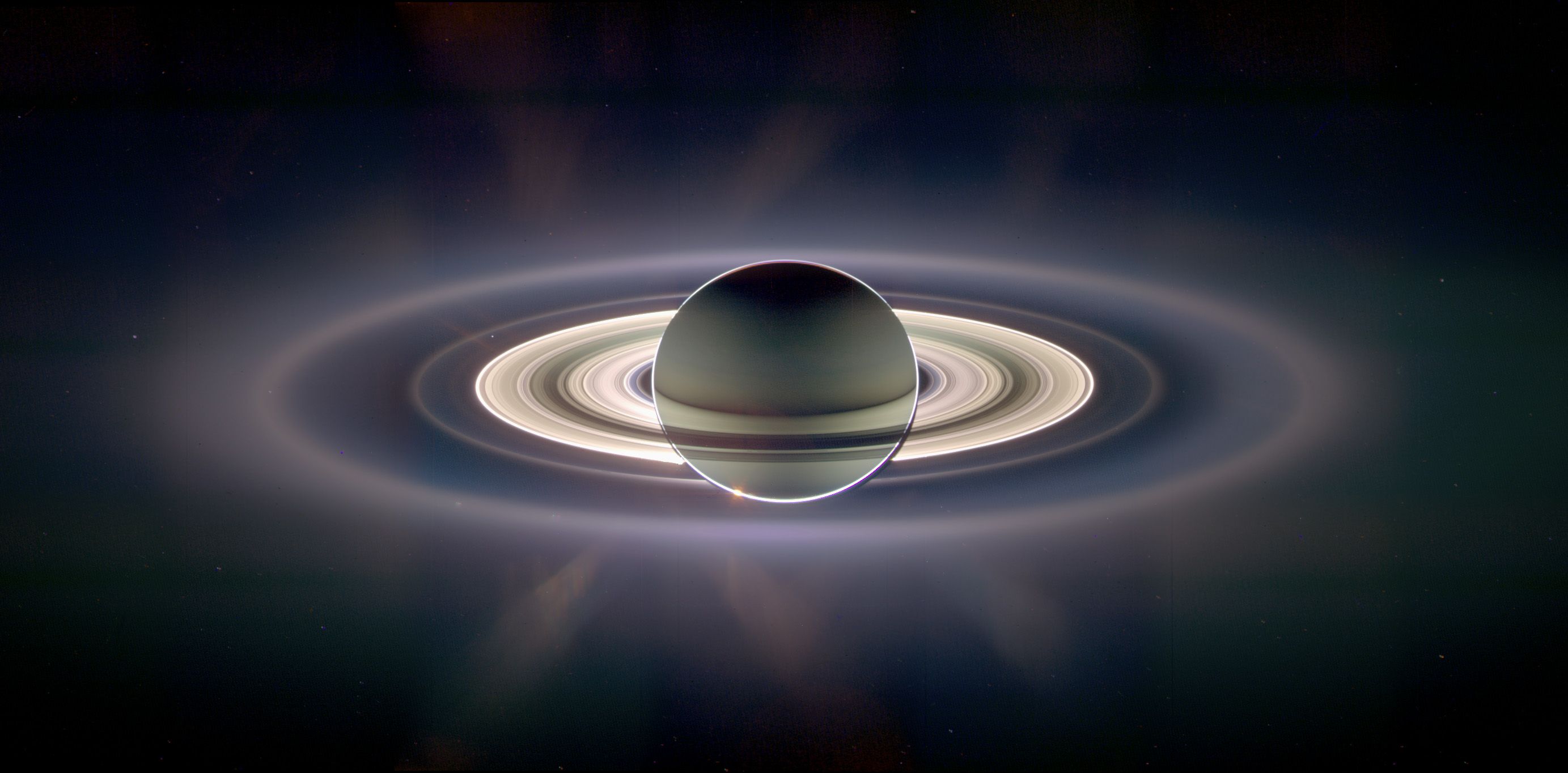
Perhaps the most famous image of Saturn taken by the Cassini spacecraft. The Earth can be seen as a tiny blue dot just to the upper left of the rings
image source
If you ask me, I would say that Cassini has delivered some of the most beautiful images that have ever been taken. Not only by a spacecraft but by anyone or anything, ever. I would probably rank Cassini up there in my top three list of favorite space exploration missions together with the Voyager 1 spacecraft and the Hubble Space Telescope (sorry Rosetta). All of which have brought our minds to new places in the Universe, and enriched our beings.
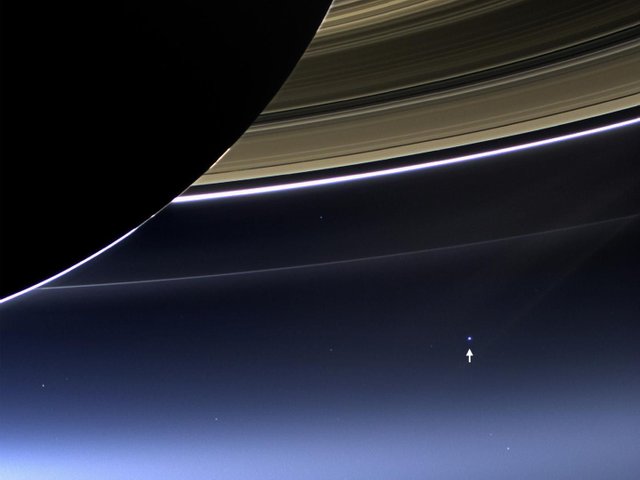
Another Cassini image of Saturn, again with the pale blue dot we call our home visible to the lower right
image source
For many working at either NASA, ESA or ASI - the Italian Space Agency, - Cassini has been a lifelong project. It's perhaps hard to believe, but the work began all the way back in 1982 when NASA and ESA formed a working group to look at potential areas the two might cooperate. 8 years before I was even born! The collaboration has since been seen as the starting point for the good relations that exist between the European and American Space Agencies today. It took 15 years before the spacecraft was launched in launched in 1997. To fully appreciate and understand how impressive the delivery of the Cassini mission has been, you may want to imagine what technologies in the early to mid-90s were like. Keep that in mind as you look at its many stunning images.
6 years and 261 days later, Cassini finally arrived in orbit around Saturn! Traveling through space is by no means a highway trip though. Getting to Saturn with today's launchers requires numerous flybys of other planets to gather momentum. To benefit from their gravitational force, the spacecraft use them almost like a slingshot to launch itself further, as can be seen from the chart below.
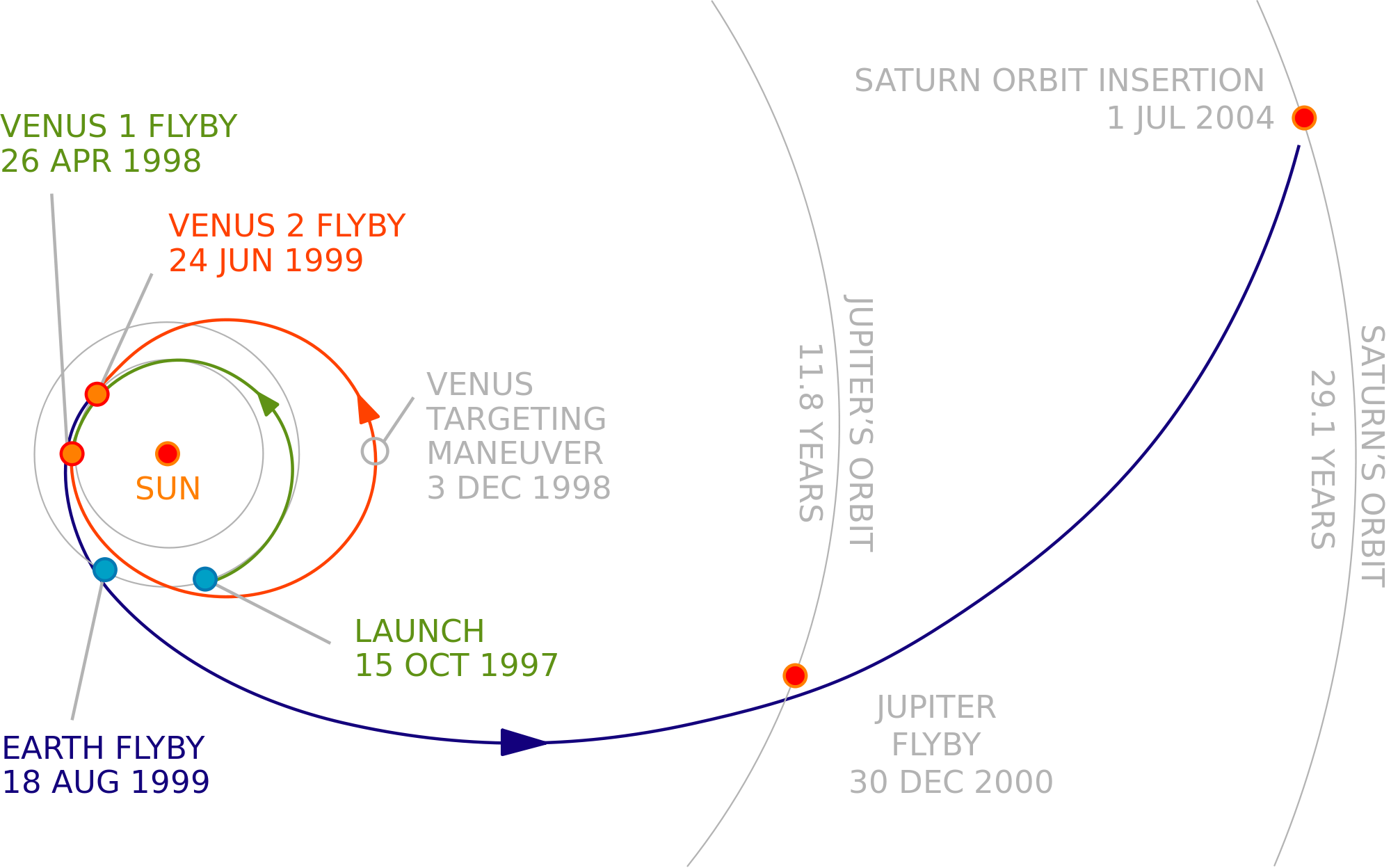
Cassini's interplanetary trajectory
image source
It's interesting to note how much added time the necessary flybys of Venus (that after all takes you closer to the Sun, rather than further into the Solar System) adds to the total travel time. Indeed, one of the benefits of NASA's next-generation launch vehicle the SLS (Space Launch System) will be that the greater force at which a spacecraft is launched will reduce the necessary flybys by 1, and thus cut down the total travel time by 1-2 years.
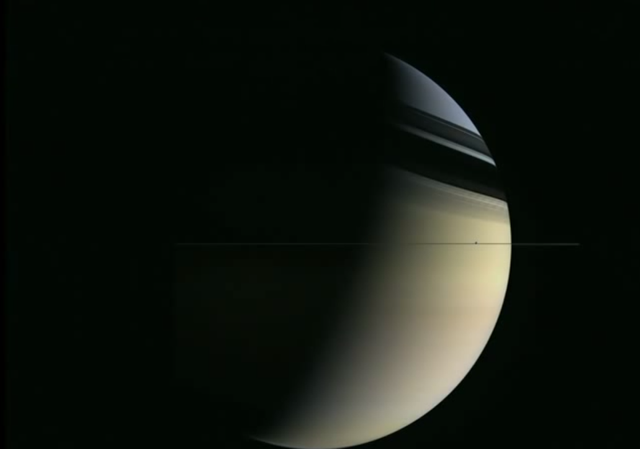
Cassini image of Saturn taken "sideways"
image source
When Cassini arrived in orbit around Saturn, one of the first images it took was from above the equator of the big gas giant. It's a fascinating image to watch, as you get to see just how thin the rings around Saturn actually are.
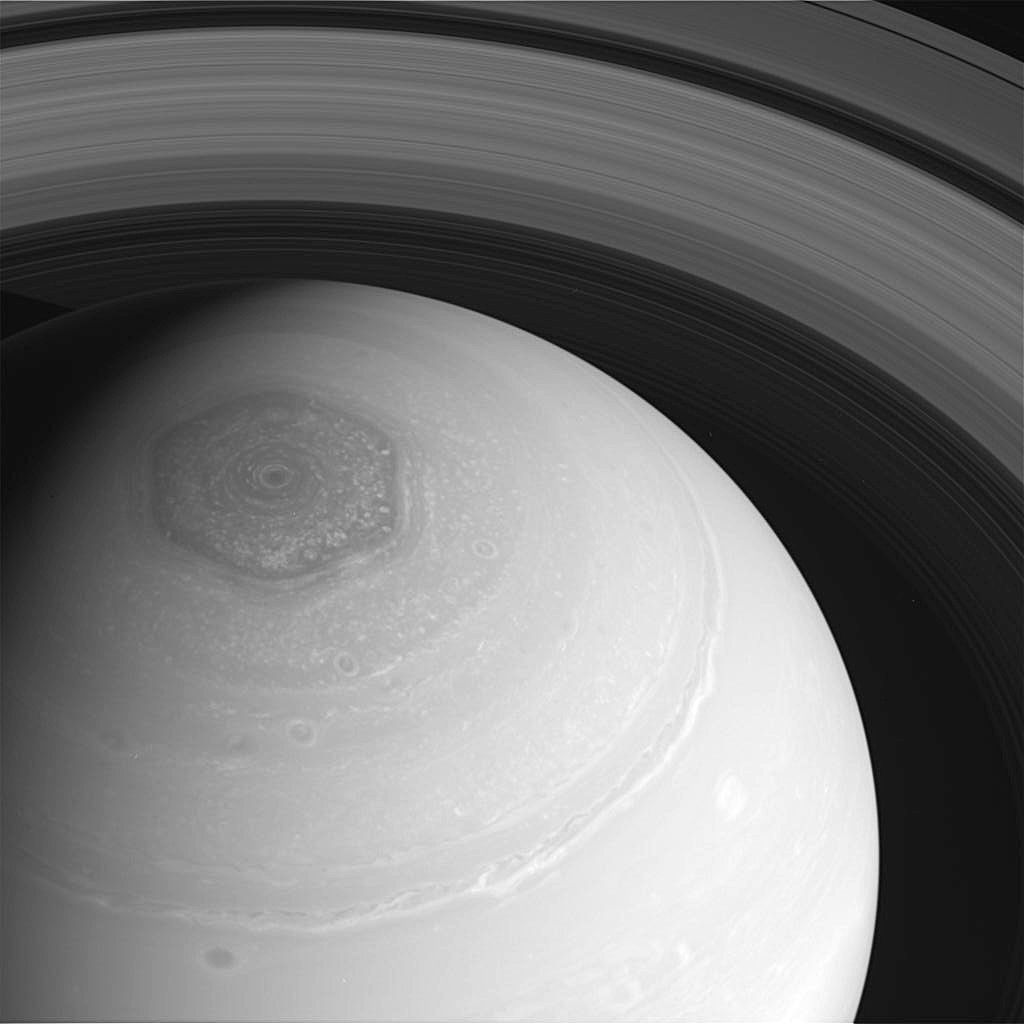
Saturn's North Pole captured by Cassini
image source
But the Cassini mission did more than just study Saturn. In recent years, we have seen some stunning images also of one of its moons, Enceladus. Enceladus has received increased interest from researchers and space enthusiasts alike thanks to Cassini's discovery in 2014 which provided strong evidence of an ocean existing on the little Moon seen on the image below.
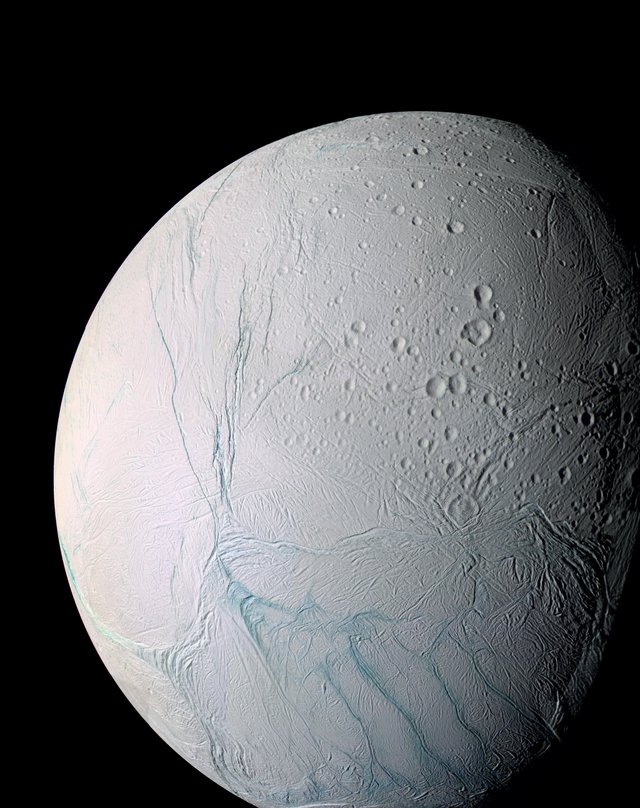
Cassini sees the southern latitudes on Enceladus, Saturn's sixth largest Moon
image source
The presence water is of immense importance to space explroation for two reasons in particular: 1. It greatly increases the likelihood of life. 2. Water is potential fuel source to enable further space travel by splitting the Hydrogen and Oxygen. Again, Cassini has shown the way!
For me, my love for Cassini really started with this amazing TED Talk by Carolyn Porco October 2007. In it, she shares what, at that point in time, she saw as the most interesting stories stemming from discoveries made by Cassini, as well as presenting many of the beautiful early images that were taken. It's hard to believe that it's almost exactly 10 years ago I fell in love with this piece of hardware!
Carolyn Porco's 2007 TED Talk
Anyhow, I am so glad to be part of a species that has it in them to discover and understand the Universe in which it lives. I am glad to see that despite all the troubles and difficulties we may have, we find the time, the resources and the drive to also pursue the frontiers of knowledge.
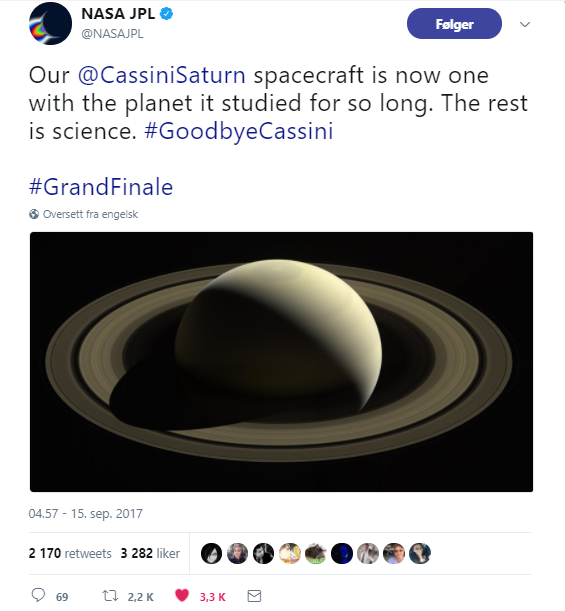
The NASA Jet Propulsion Laboratory with a beautiful tweet following the successful ending of Cassini
image source
Cassini's mission might be over, but its impact on our scientific understanding of the world has only just begun.
Fredrik / @fredrikaa
Such a successful mission for Cassini and all my admiration for the team that has been working on the project for years and for you being part of it. I remember when I first watched images on a Tv documentary about Saturn's North Pole captured by Cassini. Isn't there yet a clear explanation for that hexagonal formation? I know there are many hypothesis, but what is your feeling about it? :)
We have a truly amazing photo archives to remember Cassini with!
That is so true. It's easy to forget just how many images Cassini has provided us with. It's only when you go through the archives as you say that you realise "oh, was this image by Cassini too?!".
Looking back and remembering the arrival at Saturn, the discoveries on its Moon Enceladus and also the pentagon shapes on it's North pole... You would almost think it's 3 different missions :)
I'm sure I'll look through its archive many times also years from now.
Watched it live, this morning... It was very quite in the control room in the last seconds as probe adjusted itself as it entered the atmosphere and the signal degraded to nothing. Great accomplishment and cooperation between NASA, ESS and ASI.
That's really cool to hear! Yeah I tried to catch as much live as I could, although we had a lot of meetings at work before lunch, so was hard to follow a lot until I got back home. But many people were visiting the Headquarters during the day to celebrate :)
I believe this is the first time I read a comment from you on my posts as I had not come across you on steemit before, happy to see you here! As a science enthusiast and free thinker myself, I hope we can have some fruitful exchanges here on this exciting new platform.
Followed you back and thank you for the resteem! See you around :)
Absolutely, and thanks for the follow - Yes, my first comment. Your intro post, a while back, caught my eye. I was hoping that you would post something on Cassini. :-) I can imagine the kind of day it was - would have loved to have been at NASA or ESA HQ for it.
Here's looking forward to many more exchanges on Steemit.
I remember the headlines when it was launched, I was only 10 years old back then. Good times ... I suport
That's a great memory to have! I didn't give a damn about space when I was young interestingly enough. The passion came with the age ;P
Thank you for the post! Heard about this on the news but I appreciate the personal insight!
Thank you for the comment! :)
Yes it's been a unique atmosphere on the house today :) many "veterans" meeting and greeting who were involved one way or another ^^ It's beautiful and a bit sad at the same time. But I like it when we end a mission, because it means we have the time and resources to pursue something new :)
Great perspective! I'm in Huntsville, AL which is a big space city. It's all everyone has been talking about today.
Cassini was an incredible mission. The images it created were incredible, that first one in your post will always be my favourite, but I also loved the ones that showed one of saturns moons that orbits in the rings and you can plainly see the moon's gravity distorting the rings:
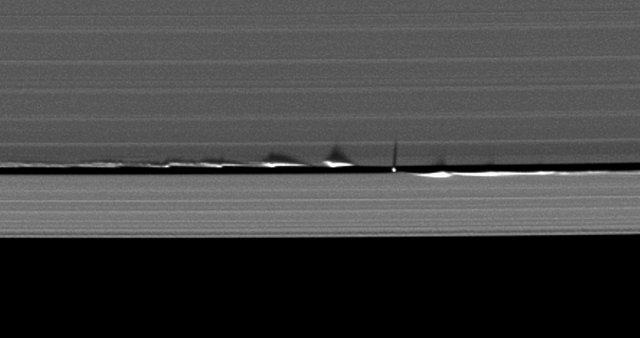
Just incredible.
Absolutely! It has provided so many treasures that when you browse through them all you're like "oh, is that one ALSO from Cassini!?!?" Because it has been around for so long, and provided so many wonders :)
So true, Cassini was an unsung hero who didn't get as much credit as she truly deserved.
First I thought it was a 3d rendered image but as I went through the whole post, I was amazed by its power. It is a miracle of modern technology.
The technology is not even that "modern" considering it's from the early to mid 90s :P
The images have been processed based on the data obtained from the sensors onboard the spacecraft. It is not like it has a super high-resolution camera :P
I wish people better understood the value of NASA in America. I'd like to have more unmanned and manned missions into space to gather info like this.
I couldn't agree more!
Beautiful write up
Thanks man!
@fredrikaa I like your submit. I have followed you.